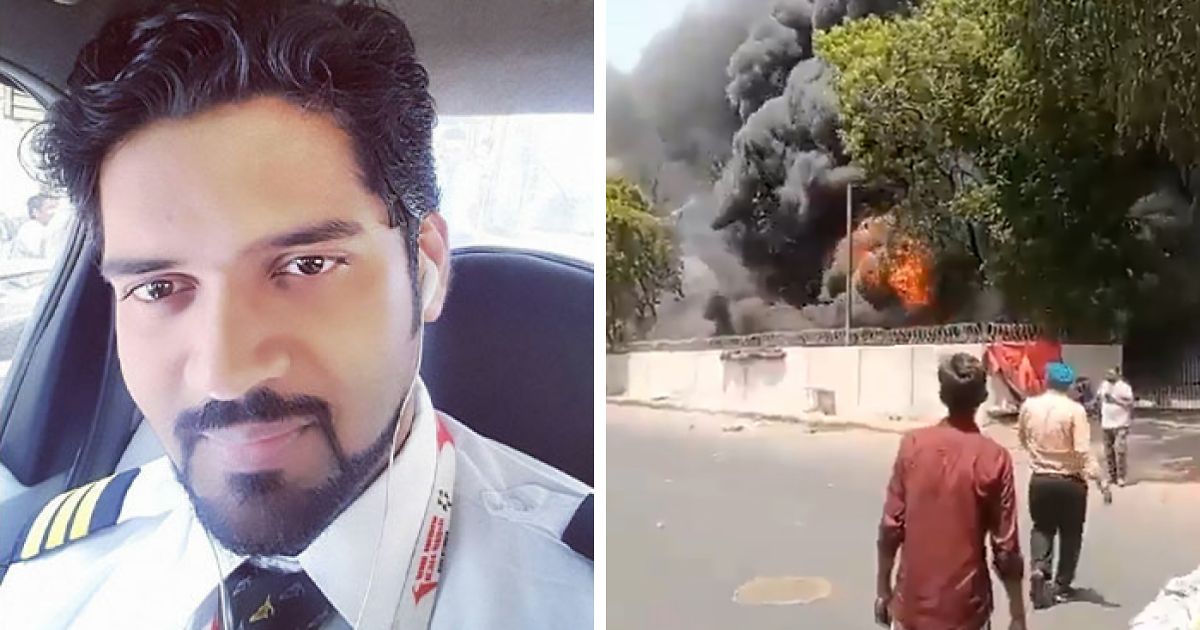Last Chilling Messages from Air India Pilots Reveal Shocking Clues Behind Deadly Crash
When tragedy strikes, sometimes it’s the last whispered words that hold the most haunting clues. A freshly unveiled report peels back the curtain on the chilling final exchange between the pilots of Air India Flight 171, just moments before their Boeing jet came crashing down into a residential area in Ahmedabad, India. With 260 lives lost, this ghastly disaster is not only the deadliest air crash of the decade but also a sizzling hotbed for theories — was it human error or a sinister mechanical failure? Intriguingly, the report spotlights those elusive fuel cutoff switches — supposedly “highly reliable” and foolproof — raising a devilish question: could they have been toggled by accident or design? It’s as if the cockpit itself is whispering secrets, daring us to decode the truth behind the catastrophe. Buckle up, because the unraveling saga might just take you on a bumpy ride through aviation mysteries and expert debates alike… LEARN MORE
A new report has revealed the last words exchanged between Air India Flight 171’s pilots moments before their aircraft crashed into a residential area of Ahmedabad in India.
The media has been fraught with speculation about human error in the month following this decade’s d*adliest air disaster that claimed the lives of 260 people on board and the ground.
- The new report sheds light on final cockpit conversation before tragic Air India crash
- The revelation raises fresh questions about the month-old aviation disaster
- Experts weigh in as theories around engine failure continue to swirl
A favored theory was that the passenger jet, built by Boeing–which suffered a rash of embarrassing and sometimes fatal technical failures–had lost power in both its engines simultaneously.
A fifteen-page report has revealed the pilot’s last conversation
Image credits: AntJKernich/11AEXIT
India’s Aircraft Accident Investigation Bureau (AAIB) report, published on July 12–exactly a month after the disaster–has since strengthened the loss-of-power theory.
The 15-page document containing images of devastation claims one pilot was heard asking the other why he “cut off” the aircraft’s fuel supply, to which his colleague claimed he did not.
The revelation drew attention to the aircraft’s fuel cutoff switches, which, when toggled, deprive the aircraft’s engines of fuel, causing them to stall.
Image credits: TheGemsofX
They are described as “highly reliable” and designed to not flip accidentally.
The switches blamed for the accident cannot be toggled accidentally
An unnamed Canadian expert speaking to the BBC on July 12 confirmed as much when they said:
“It would be almost impossible to pull both switches with a single movement of one hand, and this makes accidental deployment unlikely.”
Image credits: iAtulKrishan1
“You can’t bump them [causing them to] move,” U.S. aviation expert John Cox confirmed.
Another aviation guru, Anthony Brickhouse, summed up the resulting conundrum by asking, “Did [the cutoff switches] move on their own, or did they move because of the pilots?”
“And if they were moved because of a pilot, why?”
Immediately after, a pilot was heard saying, “Thrust not achieved… falling”
Regarding the Air India B787 AI171 crash report, the fuel control cutoff switch requires manual physical activation by the pilots and locks securely in either the “run” or “cutoff” position. It cannot move independently. Even if one fuel control switch was moved, both switches… pic.twitter.com/wS4As5AlxY
— Fahad Naim (@Fahadnaimb) July 12, 2025
The AAIB report said that immediately after the exchange about the fuel cutoff, one of the pilots was heard saying: “Thrust not achieved… falling… Mayday! Mayday! Mayday!”
As a nod to the AAIB’s assertions, it emerged shortly after the crash on June 12 outside Ahmedabad airport in India’s western state of Gujarat, that ground control had received a distress call.
Image credits: OfficialJoel4
“The ATCO enquired about the call sign. ATCO did not get any response but observed the aircraft crashing outside the airport boundary and activated the emergency response,” the report elaborated.
The switches were off for 10 seconds before reengaging
From the AAIB’s perspective, “the aircraft achieved the maximum recorded airspeed of 180 Knots IAS at about 08:08:42 UTC.
Image credits: OfficialJoel4
“Immediately thereafter, the Engine 1 and Engine 2 fuel cutoff switches transitioned from RUN to CUTOFF position one after another with a time gap of 01 sec.
It went on to say that the fuel cutoffs reengaged after 10 seconds, starting with Engine 1, and followed by Engine 2, four seconds after:
“As per the EAFR, the Engine 1 fuel cutoff switch transitioned from CUTOFF to RUN at about 08:08:52 UTC. The APU Inlet Door began opening at about 08:08:54 UTC, consistent with the APU Auto Start logic.
Image credits: TheGemsofX
“Thereafter at 08:08:56 UTC the Engine 2 fuel cutoff switch also transitions from CUTOFF to RUN.”
Auto Amazon Links: No products found.




















